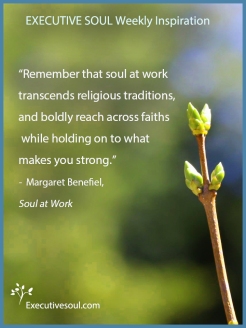
In this week between two worlds, the world of 2020 and the world of 2021, I’ve been reflecting on liminal space. What is liminal space? Susan Beaumont, in How to Lead When You Don’t Know Where You’re Going, describes liminal space as the space between the old and the new, when the old has disintegrated and the new has not yet come. Our human will has a bias toward returning to the old or rushing to the new, profoundly uncomfortable in the liminal space. Yet the liminal space provides the holding environment for gestation. Waiting in the liminal space provides room for creativity and growth.
2020 served up a lot of liminal space for me and for the Shalem Institute, the organization I serve in leadership. For example, when COVID-19 hit, I had no roadmap. Our strategic planning process had not, in our wildest imaginings, anticipated this scenario. Part of me felt tempted to devise a plan, any plan, to chart a course through this storm.
Yet another part of me knew I needed to wait. Our old way of doing things wouldn’t work anymore. The old was falling apart before our eyes. The new had not yet emerged. Prematurely rushing to devise a plan, I sensed, would prove counterproductive.
And I knew I needed to listen. Personally, I needed to listen for what was being invited. Corporately, we at Shalem needed to listen. I needed to help hold the space for our staff team to listen. I needed to help hold the space for our board to listen. Just because we couldn’t offer programs in our old tried-and-true ways didn’t mean the Holy Spirit had stopped working. How could we listen for what the Spirit was up to now?
How to Lead When You Don’t Know Where You’re Going helped me recognize the normalcy of what we were experiencing. It helped me stay in the uncomfortable liminal space and invite others into it as well. Others had traveled this road before. While COVID-19 was new, the experience of living in liminal space was not. The degree to which we could stay in the liminal space with open, listening minds, hearts, and wills would determine the degree to which we could respond to the emerging future waiting to be born through us.
While we still find ourselves living between the old and the new, with staff working from home and programs shifted to Zoom, with no clear end in sight, we have found that listening for divine guidance, experimenting, and trusting has served us well. Surprisingly, enrollment in our programs has increased substantially. Our community has been generous financially. Our staff and board are strong. We are thriving.
Yes, we still lack a roadmap. Yes, I’m still tempted at times to rush toward a new strategic plan. Yes, it’s often uncomfortable and difficult. Yet exercising our trust muscles for the past nine months has taught us that living in liminal space can be an adventure of listening, open-heartedness, and growth.
While I don’t yet know what 2021 has to offer, I want to commit myself to living in this ongoing liminal space with an open mind, open heart, and open will.
May we all experience the blessings of liminal space in 2021, even amidst its challenges.
















Insightful, challenging and provocative. May we all have the courage to dwell in this liminal, creative spaciousness, as hard as it may be. It’s the way of birthing. Thank you.
Thank you, Sharon. Yes, it’s the way of birthing. May we keep remembering that in the hard moments of labor.
–Margaret
Thank you, Margaret. Beaumont’s book is here on my desk. I see the bookmark in it, which indicates I have not finished it. Perhaps I will do so in 2021. Yes, we live in liminal space. Perhaps the life of faith is living in liminal space. Abraham went out not knowing (Hebrews 11:8). I do too.
Addition to my last sentence: I do too–with an open mind, open heart, and open will.
Yes, I think you’re right, Michael, that the life of faith is living in liminal space. These times put that in stark relief.
–Margaret